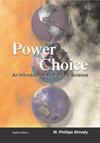

 Power & Choice, 8/e Elections Chapter Outline
|
 2003 McGraw-Hill Higher Education
2003 McGraw-Hill Higher EducationAny use is subject to the Terms of Use and Privacy Policy.
McGraw-Hill Higher Education is one of the many fine businesses of The McGraw-Hill Companies.
 |  | ||||||||||||||||||||||||||||||
| Student View | Instructor View | information Center | Home | |||||||||||||||||||||||||||||||
| |||||||||||||||||||||||||||||||
 2003 McGraw-Hill Higher Education 2003 McGraw-Hill Higher EducationAny use is subject to the Terms of Use and Privacy Policy. McGraw-Hill Higher Education is one of the many fine businesses of The McGraw-Hill Companies. | |||||||||||||||||||||||||||||||